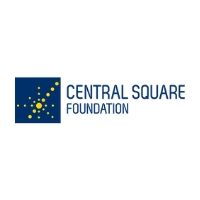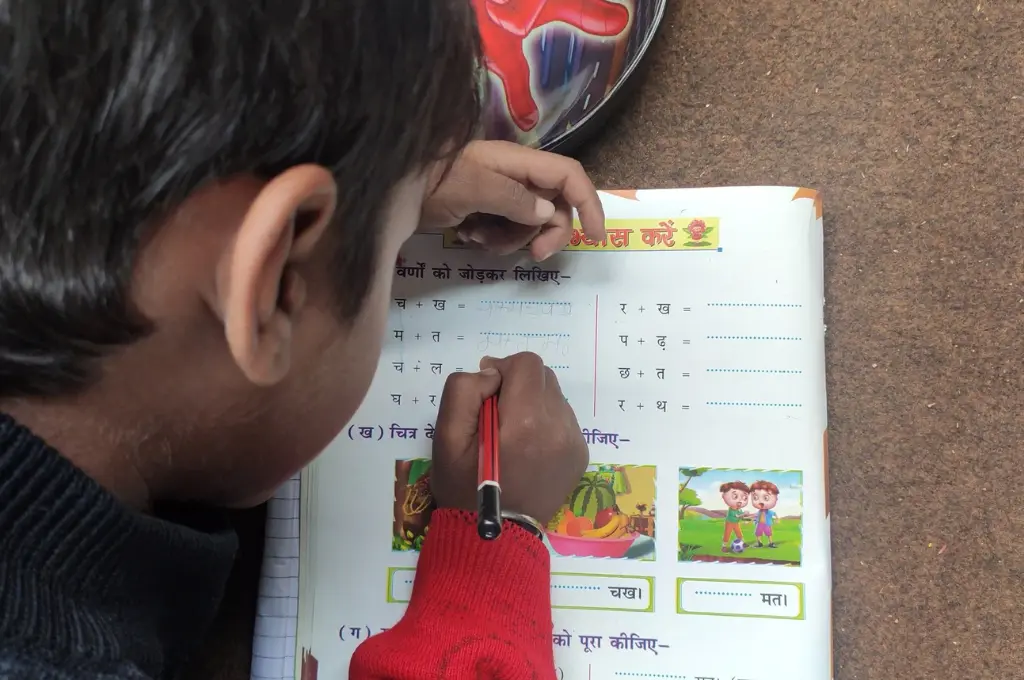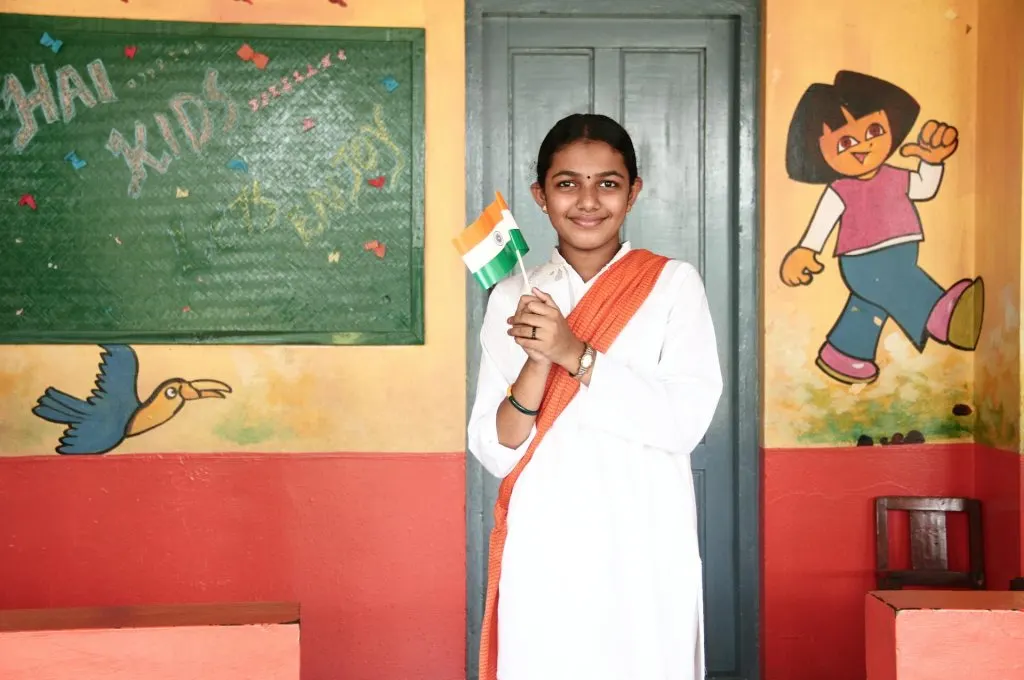On May 31, 2019, the Ministry of Human Resource Development (MHRD) released the draft of the National Education Policy (NEP). This is the first update to India’s education policy in nearly 30 years, and there has been plenty of debate on the recommendations made by the draft, and it is open to the public for feedback and suggestions till July 31.
Central Square Foundation’s (CSF) monthly newsletter The EDge asked eminent names from the education sector to share their thoughts on some key aspects of the policy.
1. Ashish Dhawan, Founder and Chairman, Central Square Foundation
What is your initial response to the draft NEP? If implemented, how do you see the impact of the policy on our education system?
The draft NEP was a long time coming, but it has made some bold and welcome recommendations to shift the focus of the education system towards quality, and improving student learning outcomes. It takes a long-term view in terms of the emphasis on flexibility and skills to ensure that our children are equipped for a rapidly changing job scenario.
We now have a policy document that explicitly recognises that we are currently in a severe learning crisis.
When I read it, my immediate thought was that we now have a policy document, even though it’s a draft, that explicitly recognises that we are currently in a severe learning crisis, and that this crisis starts in the early years. This is significant. If we were to focus and get this one thing right, i.e., ensure all children have foundational literacy and numeracy skills, this in itself would have a tremendous impact on the education system.
What are some of the key steps the government can take for the successful implementation of the policy? How can the policy translate into real action?
The challenge is that current state capacity to deliver quality education is weak, and we do not have the resources to focus on so many things at the same time. My one advice to the government would be that they should almost ruthlessly prioritise–they should first focus on ensuring that all children achieve foundational literacy and numeracy, and then phase in other priorities, as needed.
Separately, I think it’s important to remember that implementation rests with states. The centre’s role is primarily one of catalysing demand for critical reforms with the states, setting broader policy goals, providing funding to states, and so on. The centre cannot be too prescriptive in terms of ‘how’ states need to implement. In fact, it needs to give states the autonomy to choose the most cost-effective pathways, while maintaining accountability for the right outcomes. The centre should also think about enabling states to develop 3-5 year plans, and not annual plans.
What, according to you, are the big misses of the draft NEP, if any?
One of the key concerns with the draft education policy is that, like many other policies, it may be attempting to do too much. As a system, we first need to focus on getting the basics right–ensure that all our children achieve foundational literacy and numeracy by class three. Without this prioritisation, the system will continue to grapple with multiple competing priorities.
One of the key concerns with the draft education policy is that, like many other policies, it may be attempting to do too much.
We cannot hope to achieve foundational learning for all our children if we don’t measure it correctly. Therefore, one of the biggest areas of reform in this regard, which is not adequately addressed by the policy in its current form, is the need to ensure independent and reliable learning data to measure early grade learning outcomes. While the NEP does call out regular adaptive assessments, there is a need to have a large-scale, independent, household-based, government-backed assessment, which measures outcomes for children attending public and private schools. This survey must be housed in and administered by an autonomous institution, which is at arm’s length from the delivery ministry, ensuring there is no conflict of interest. This learning data is critical for the government to meaningfully hold the system accountable and keep us honest.
This is an excerpt from CSF’s interview with Ashish Dhawan.
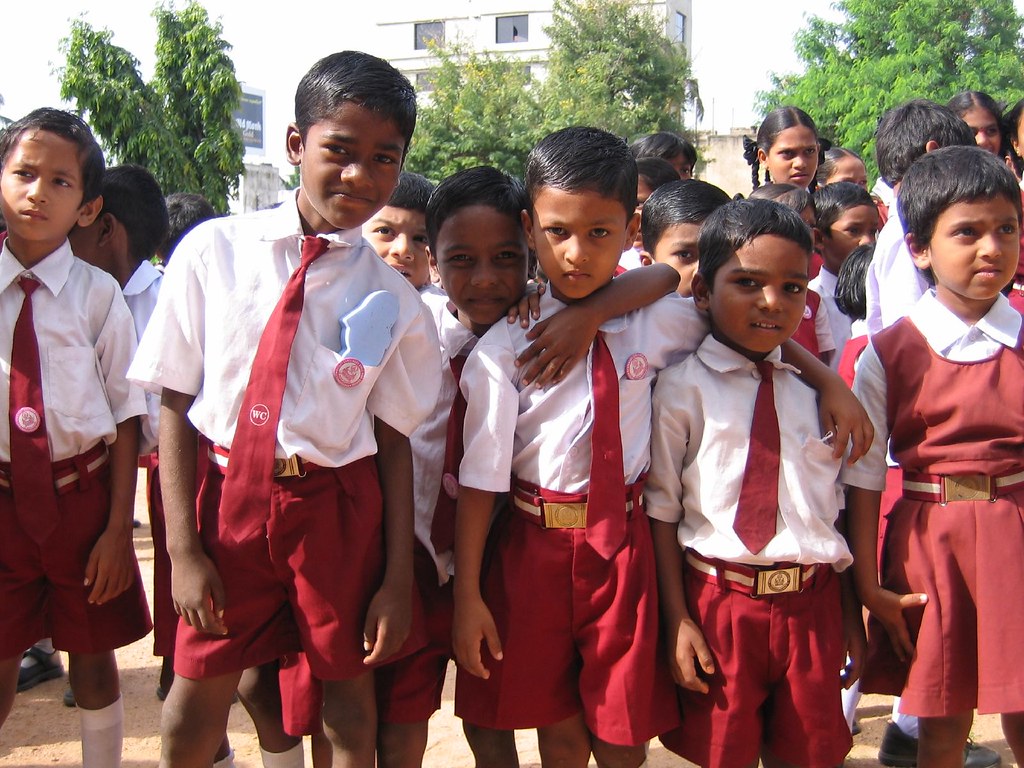
We cannot hope to achieve foundational learning for all our children if we don’t measure it correctly | Photo courtesy: Mel Gupta, Flickr (CC BY-SA 2.0)
2. Geeta Gandhi Kingdon, Professor, University College London and President, City Montessori School, Lucknow
The NEP refers to the creation of an independent agency to gather and analyse data for the education system. What are crucial data gaps on private schools that the government should strive to fill?
There is hardly any data on private schools because they are rarely included in studies or surveys done by the government. It is as if private school students belong to another country. For example, the National Achievement Survey (NAS) is conducted only in government and aided schools and excludes private unaided schools. We need more information about private schools to get a fuller picture of the education sector.
What do you think of the proposition to separate regulation, provision, and policy-making in the NEP? How do overlapping interests between these functions presently impact private schools?
The idea of separating roles is very good, because if government performs all the roles–funder, provider, regulator, policy maker, assessor–it leads to many conflicts of interest. However, the NEP does not go far enough because it does not separate funding and provision–the government is both the funder and producer of education, i.e., it runs schools itself. The NEP does not consider public funding for privately produced education (public-private partnerships). It is a myth that in educationally developed countries, all schools are state-run. Actually, they are only publicly funded, not publicly run. This is an important distinction that many in government are unaware of. In India, there is an entrenched belief that the government shouldn’t just fund education, it must also produce it (i.e., run the schools)–even when it has struggled to deliver quality. Our main focus should be to ensure that all elementary education is publicly funded, so that parents do not have to pay to send their children to school. But the operation of the schools themselves could be in private hands if they are deemed to be more efficient, i.e., to deliver better child outcomes at lower cost.
The idea of separating roles is very good, because if government performs all the roles, it leads to many conflicts of interest.
The NEP has also proposed the establishment of an independent State School Regulatory Authority (SSRA) for each state, to handle all aspects of school regulation and accreditation. It recommends reducing the burden of over-regulation on private schools, and regulating public and private schools within the same framework/benchmarks. These are welcome proposals. Much depends, however, on how the SSRA will operate. Will it subject public schools to accountability pressures? For example, will government schools have to go through a process of recognition same as private schools? And will they also be closed down if they do not comply with the norms of the RTE Act? The NEP doesn’t clarify this, leaving open the possibility of the continuation of non-accountable public schools and resultant poor learning outcomes.
This is an excerpt from CSF’s interview with Geeta Gandhi Kingdon.
3. Rukmini Banerji, CEO, Pratham Education Foundation
The draft NEP includes pre-primary education as part of the ‘foundational stage’ (ages 3-8) and strongly recommends that this stage must be a continuum. Do you agree? How should we approach this?
I welcome the strong focus on the early years. Building strong foundations in the early years allows children to ‘leap forward’. The widespread phenomena of ‘falling behind’ that we see today happens because the right things are not done at the right time.
The draft policy states that children in the 3-8 year age group should receive a flexible, “play-based, activity-based, and discovery-based education.” However, it is fair to say that the educational establishment in India, including the government bodies at central, state, and district levels that have so far guided schools, have little or no experience with the preschool age group.
The widespread phenomena of ‘falling behind’ that we see today happens because the right things are not done at the right time.
Pre-primary classes are often part of primary schools in the private sector and much of the student intake happens in lower or upper kindergarten. However, research studies show that most activities in these institutions in the early age group are ‘school-like’ and do not provide the flexible, play-based, and developmentally appropriate activities that are suited for supporting the development of young minds. So, despite several years of preschool education, such children are still not ‘ready’ for class 1. At the same time, the Integrated Child Development Services (ICDS) system run by the Ministry of Women & Child Development (MWCD) is typically overwhelmed by responsibilities in health, immunisation, and nutrition. So, in anganwadis, early childhood stimulation or development has not received the high priority that it needs.
Bringing these two ministries together, all the way from the centre to the states, districts, and villages, will be a huge and challenging task, but one that is certainly worth undertaking. Clear financial calculations will be needed to support this convergence exercise in a sustained way.
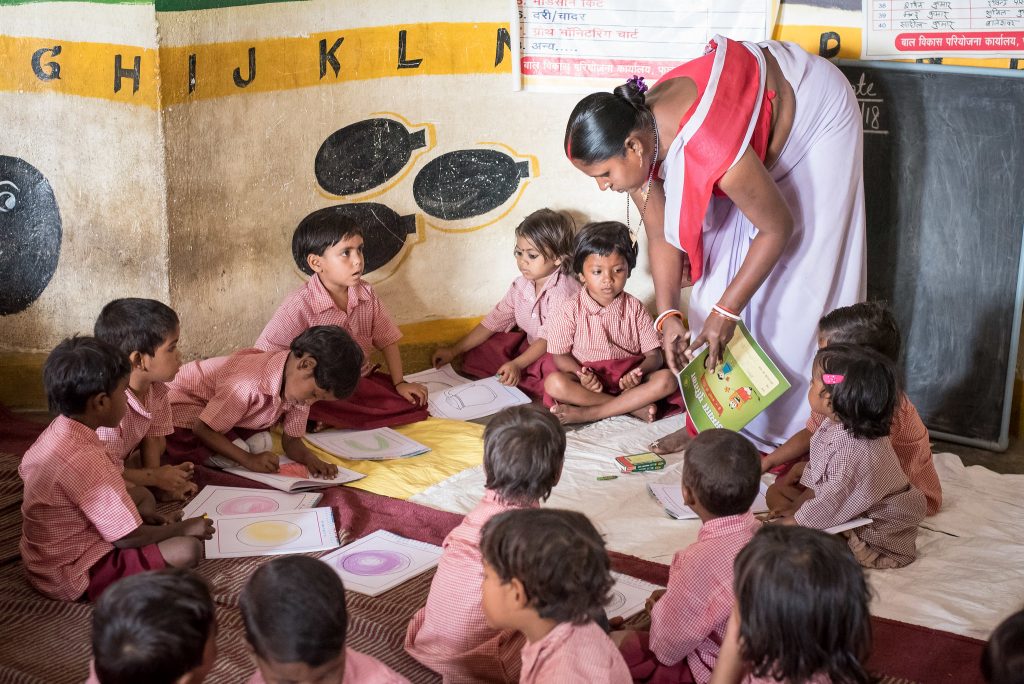
In anganwadis, early childhood stimulation or development has not received the high priority that it needs | Photo courtesy: Dana Schmidt, Flickr (CC BY-NC 2.0)
One of the objectives the draft NEP states is that every child in grade 5 and beyond should achieve foundational literacy and numeracy – can you talk about some of the specifics with regard to the pedagogical and curricular changes that will be needed to achieve this goal?
According to ASER data, only about 50 percent of class five children are able to read at class two level (or higher). The other half is spread across several reading levels, starting from not being able to even recognise letters to just about coping with simple sentences. This is one of the biggest challenges in primary schools, the wide dispersion of learning levels. The teacher’s daily dilemma is to figure out what to teach and to whom. To complete the curriculum guided by grade-level textbooks, teachers usually choose to only focus on the ‘top of the class’, leaving others to catch up on their own. Even the RTE Act prescribes that teachers “must complete entire curriculum within specified time.”
The draft NEP highlights several causes for the learning crisis, including the lack of school readiness, but it doesn’t address the negative consequences of overambitious curricula or the common practice of teaching to the top of the class. The real challenge is, therefore, to schedule ‘catch-up’ routines into the regular school schedule. Given the size, depth, and magnitude of the ‘catch-up’ that is required, we will need a persistent and high priority effort for at least five years or more. The alignment of key elements of the school system such as teacher training, teaching-learning material, ongoing teacher support, mentoring-monitoring, assessment, and course correction towards achieving stated goals is critical. Perhaps this alignment for foundational learning will now be possible given the overarching direction of the new policy.
This is an excerpt from CSF’s interview with Rukmini Banerji.
4. Sridhar Rajagopalan, President and Chief Learning Officer, Educational Initiatives
The draft NEP calls for the appropriate integration of technology into all levels of education. What is your initial response to the draft in terms of how it envisions the role of technology in education?
The draft policy mentions India’s unique leadership in the technology space and acknowledges that the right policy and implementation push can help India become a global leader in EdTech. Overall, the policy seems to have its heart in the right place, yet many challenges plague the successful implementation of EdTech in our country. For example, one of the most common issues with all EdTech projects is the disproportionate focus on hardware as compared to the software or content.
One of the most common issues with all EdTech projects is the disproportionate focus on hardware as compared to the software or content.
One big miss without a doubt, is that it fails to recognise the role of the private, for-profit players and their international experience. It would have been useful to look into what has been tried already in EdTech and the challenges those efforts faced. While the collective goal should be to strengthen state resources and capacities and help curate high-quality open resources, there should be an effort to learn from the for-profit EdTech players and view them as providers of co-existing and complementing solutions.
Again, for implementation of suggestions made in the policy, do you think we have adequate infrastructure and capacity in our schools and state systems? What could be the challenges in creating that infrastructure and capacity?
The infrastructure and capacity do not exist, but like with anything new, they can be developed over time as these projects expand. However, problems arise if the approach tends to focus more on scaling than on quality. Ironing out all possible issues at the scale of 20-100 schools is very important, and a disproportionate focus at this scale will help in ensuring that fewer challenges arise at a larger scale of say 1,000 or 2,000 schools.
What is important in all this is generating effective assessment solutions and protocols to provide learning feedback. Again, this should be done in a low-stake, quality-focused manner while gradually scaling up and taking key players and partners along.
This is an excerpt from CSF’s interview with Sridhar Rajagopalan.


